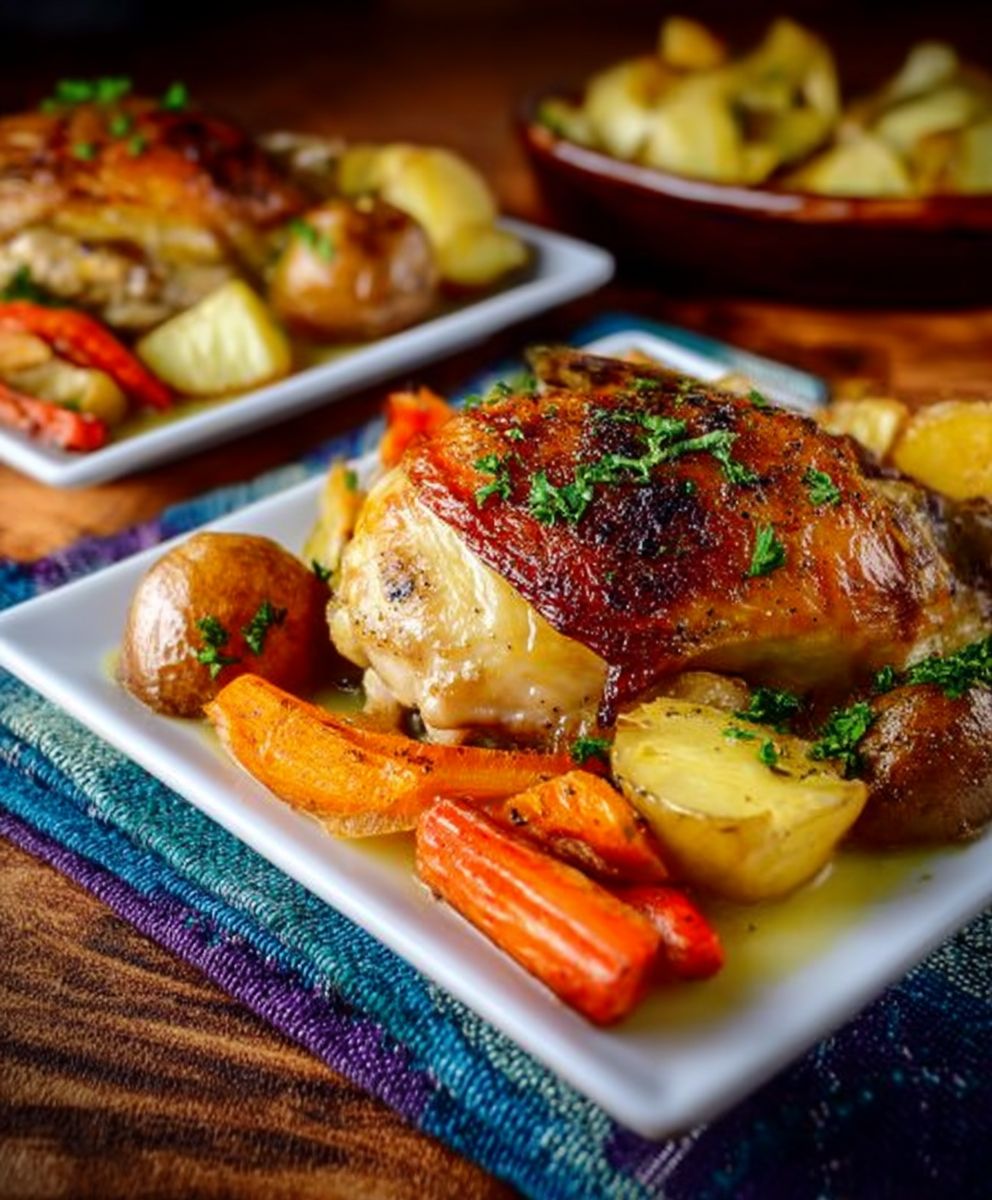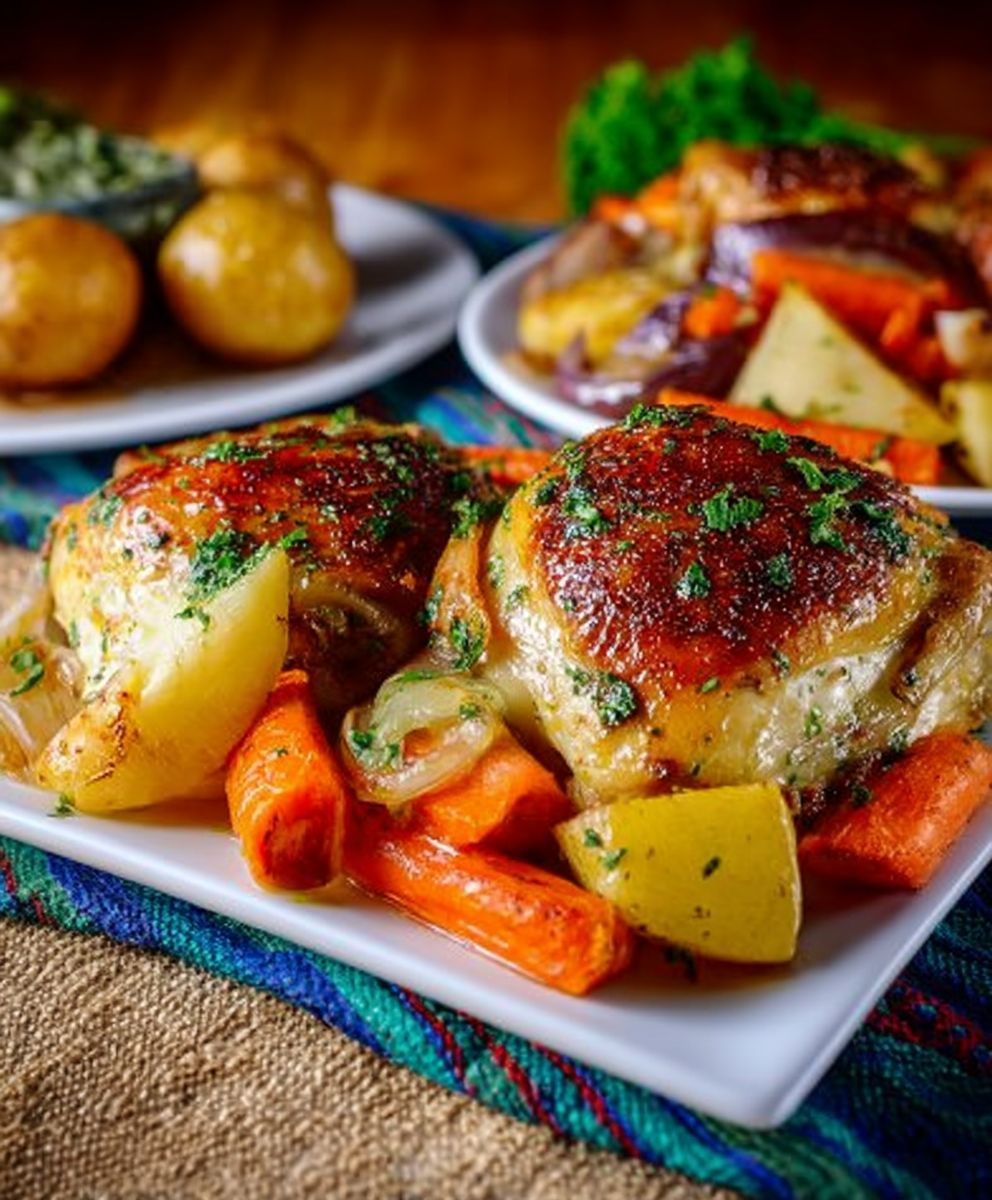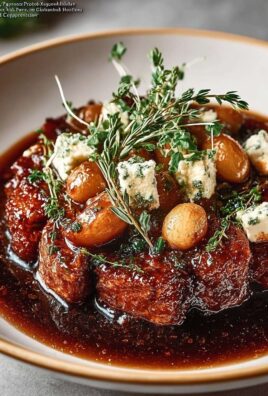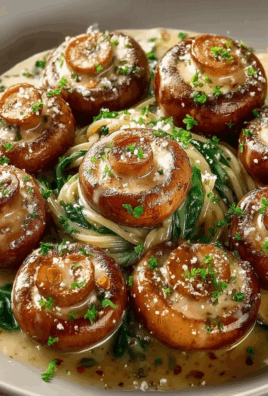Roast chicken with vegetables: Is there anything more comforting than the aroma of a perfectly roasted chicken wafting through your home? It’s a dish that evokes feelings of warmth, family gatherings, and simple, wholesome goodness. I’m thrilled to share my foolproof recipe for achieving that golden-brown, juicy bird surrounded by tender, flavorful vegetables.
The humble roast chicken has a rich history, gracing tables for centuries across various cultures. From medieval feasts to Sunday suppers, it’s a dish that transcends time and borders. Its enduring appeal lies in its simplicity and versatility. You can customize it with your favorite herbs, spices, and vegetables, making it a truly personal culinary creation.
But why do people love roast chicken with vegetables so much? Beyond the nostalgic comfort it provides, it’s a feast for the senses. The crispy skin, the succulent meat, and the medley of roasted vegetables offer a delightful combination of textures and flavors. Plus, it’s incredibly convenient! One pan, minimal cleanup, and a complete, satisfying meal what’s not to love? Get ready to impress your family and friends with this classic dish that’s easier to master than you might think!
Ingredients:
- 1 whole chicken (about 4-5 lbs), giblets removed
- 1 lemon, halved
- 1 head of garlic, halved horizontally
- 2 sprigs fresh rosemary
- 2 sprigs fresh thyme
- 2 carrots, peeled and chopped into 1-inch pieces
- 2 celery stalks, chopped into 1-inch pieces
- 1 large onion, quartered
- 1.5 lbs Yukon Gold potatoes, quartered
- 1 lb Brussels sprouts, trimmed and halved
- 4 tablespoons olive oil, divided
- 2 tablespoons butter, melted
- Salt and freshly ground black pepper to taste
- 1 cup chicken broth
- 1 tablespoon cornstarch (optional, for gravy)
- 2 tablespoons cold water (optional, for gravy)
Preparing the Chicken:
- Preheat your oven to 425°F (220°C). This high temperature helps to crisp up the skin beautifully.
- Prepare the chicken. Remove the chicken from its packaging and pat it dry thoroughly with paper towels. This is crucial for achieving crispy skin. Don’t skip this step!
- Season the cavity. Generously season the inside of the chicken cavity with salt and pepper. This will flavor the chicken from the inside out.
- Stuff the cavity. Place one lemon half, one half of the garlic head (cut side up), one sprig of rosemary, and one sprig of thyme inside the chicken cavity. This aromatic stuffing will infuse the chicken with wonderful flavors as it roasts.
- Prepare the skin. In a small bowl, combine 2 tablespoons of olive oil and the melted butter. Brush this mixture all over the chicken skin, ensuring every part is coated. This will help the skin to brown and crisp up beautifully.
- Season the outside. Generously season the outside of the chicken with salt and pepper. Don’t be shy with the seasoning it’s what makes the chicken flavorful!
Preparing the Vegetables:
- Prepare the vegetables. In a large bowl, combine the carrots, celery, onion, potatoes, and Brussels sprouts.
- Season the vegetables. Drizzle the remaining 2 tablespoons of olive oil over the vegetables. Season generously with salt and pepper. Toss everything together to ensure the vegetables are evenly coated.
Roasting the Chicken and Vegetables:
- Arrange the vegetables. Spread the seasoned vegetables in a single layer in a large roasting pan.
- Place the chicken. Place the chicken on top of the vegetables in the roasting pan. The vegetables will act as a natural roasting rack, preventing the chicken from sitting directly in the pan juices and allowing for even cooking.
- Add the remaining aromatics. Place the remaining lemon half, garlic half, rosemary sprig, and thyme sprig around the chicken in the roasting pan.
- Roast the chicken. Place the roasting pan in the preheated oven and roast for 1 hour and 15 minutes to 1 hour and 30 minutes, or until the chicken is cooked through and the internal temperature reaches 165°F (74°C) in the thickest part of the thigh. Use a meat thermometer to ensure accuracy.
- Baste the chicken. After the first 30 minutes of roasting, baste the chicken with the pan juices. Repeat this every 20 minutes or so to keep the chicken moist and promote even browning.
- Check for doneness. To check if the chicken is done, insert a meat thermometer into the thickest part of the thigh, avoiding the bone. The internal temperature should reach 165°F (74°C). You can also pierce the thigh with a fork; if the juices run clear, the chicken is done.
- Rest the chicken. Once the chicken is cooked through, remove it from the oven and let it rest for 15-20 minutes before carving. This allows the juices to redistribute throughout the chicken, resulting in a more tender and flavorful bird. Tent the chicken loosely with foil while it rests to keep it warm.
Making the Gravy (Optional):
- Separate the pan juices. After the chicken has rested, carefully pour the pan juices into a fat separator. If you don’t have a fat separator, you can use a spoon to skim off the excess fat from the top of the juices.
- Make a slurry. In a small bowl, whisk together the cornstarch and cold water until smooth. This is your slurry, which will help to thicken the gravy.
- Simmer the juices. Pour the defatted pan juices into a saucepan and bring to a simmer over medium heat.
- Whisk in the slurry. Slowly whisk the cornstarch slurry into the simmering pan juices. Continue to whisk constantly until the gravy thickens to your desired consistency. This should only take a few minutes.
- Season the gravy. Taste the gravy and season with salt and pepper to taste. You can also add a splash of cream or a pat of butter for extra richness, if desired.
- Strain the gravy (optional). For a smoother gravy, you can strain it through a fine-mesh sieve before serving.
Carving and Serving:
- Carve the chicken. Carve the chicken by first removing the legs and thighs. Then, remove the wings. Finally, carve the breast meat by slicing it parallel to the breastbone.
- Serve the chicken and vegetables. Arrange the carved chicken and roasted vegetables on a platter.
- Serve with gravy (optional). Drizzle the gravy over the chicken and vegetables, or serve it on the side.
- Enjoy! Serve immediately and enjoy your delicious roast chicken with vegetables!

Conclusion:
This isn’t just another roast chicken recipe; it’s a gateway to effortless weeknight dinners and impressive Sunday feasts. The beauty of this roast chicken with vegetables lies in its simplicity and the incredible depth of flavor you achieve with minimal effort. From the crispy, golden skin infused with herbs to the tender, juicy meat and perfectly roasted vegetables, every bite is a symphony of textures and tastes. I truly believe this will become a staple in your kitchen, a recipe you turn to time and time again.
But why is this particular roast chicken a must-try? It’s more than just the sum of its parts. It’s the way the chicken drippings mingle with the vegetable juices, creating a natural gravy that’s bursting with savory goodness. It’s the aroma that fills your home as it roasts, promising a comforting and satisfying meal. It’s the sheer versatility of the dish, easily adaptable to your preferences and whatever vegetables you have on hand.
And the best part? It’s incredibly forgiving. Don’t have carrots? Use parsnips! Not a fan of thyme? Rosemary works beautifully! Feel free to experiment with different herbs, spices, and vegetables to create your own signature version.
Serving Suggestions and Variations:
* Classic Comfort: Serve the roast chicken and vegetables with a side of creamy mashed potatoes or fluffy rice to soak up all those delicious pan juices. A simple green salad adds a refreshing contrast.
* Mediterranean Twist: Add some Kalamata olives, feta cheese, and a squeeze of lemon juice to the roasted vegetables for a Mediterranean-inspired meal.
* Spicy Kick: Toss the vegetables with a pinch of red pepper flakes or a drizzle of chili oil before roasting for a little heat.
* Leftover Magic: Don’t let any of that delicious chicken go to waste! Shred the leftover chicken and use it in sandwiches, salads, soups, or even tacos. The roasted vegetables are also fantastic in frittatas or omelets. You can even use the chicken carcass to make a flavorful homemade broth.
I’m confident that once you try this recipe, you’ll understand why I’m so enthusiastic about it. It’s a crowd-pleaser, a time-saver, and a guaranteed way to impress your family and friends. It’s the perfect centerpiece for any occasion, from a casual weeknight dinner to a special holiday gathering.
So, what are you waiting for? Preheat your oven, gather your ingredients, and get ready to experience the joy of a perfectly roasted chicken. I promise you won’t be disappointed.
And most importantly, I’d love to hear about your experience! Did you make any modifications? What were your favorite vegetables to roast alongside the chicken? Share your photos and stories in the comments below. Let’s create a community of roast chicken enthusiasts and inspire each other with our culinary creations. Happy cooking! I can’t wait to see your versions of this amazing roast chicken with vegetables!
Roast Chicken with Vegetables: A Delicious and Easy Recipe
Classic roast chicken with flavorful herbs, lemon, and garlic, roasted alongside tender Yukon Gold potatoes, carrots, celery, Brussels sprouts, and a simple pan gravy (optional).
Ingredients
- 1 whole chicken (about 4-5 lbs), giblets removed
- 1 lemon, halved
- 1 head of garlic, halved horizontally
- 2 sprigs fresh rosemary
- 2 sprigs fresh thyme
- 2 carrots, peeled and chopped into 1-inch pieces
- 2 celery stalks, chopped into 1-inch pieces
- 1 large onion, quartered
- 1.5 lbs Yukon Gold potatoes, quartered
- 1 lb Brussels sprouts, trimmed and halved
- 4 tablespoons olive oil, divided
- 2 tablespoons butter, melted
- Salt and freshly ground black pepper to taste
- 1 cup chicken broth
- 1 tablespoon cornstarch (optional, for gravy)
- 2 tablespoons cold water (optional, for gravy)
Instructions
- Preheat: Preheat oven to 425°F (220°C).
- Prepare Chicken: Pat the chicken dry with paper towels.
- Season Cavity: Generously season the inside of the chicken cavity with salt and pepper.
- Stuff Cavity: Place one lemon half, one half of the garlic head (cut side up), one sprig of rosemary, and one sprig of thyme inside the chicken cavity.
- Prepare Skin: Combine 2 tablespoons of olive oil and the melted butter. Brush this mixture all over the chicken skin.
- Season Outside: Generously season the outside of the chicken with salt and pepper.
- Prepare Vegetables: In a large bowl, combine the carrots, celery, onion, potatoes, and Brussels sprouts.
- Season Vegetables: Drizzle the remaining 2 tablespoons of olive oil over the vegetables. Season generously with salt and pepper. Toss everything together.
- Arrange Vegetables: Spread the seasoned vegetables in a single layer in a large roasting pan.
- Place Chicken: Place the chicken on top of the vegetables in the roasting pan.
- Add Aromatics: Place the remaining lemon half, garlic half, rosemary sprig, and thyme sprig around the chicken in the roasting pan.
- Roast: Roast for 1 hour and 15 minutes to 1 hour and 30 minutes, or until the chicken is cooked through and the internal temperature reaches 165°F (74°C) in the thickest part of the thigh.
- Baste: After the first 30 minutes of roasting, baste the chicken with the pan juices. Repeat this every 20 minutes or so.
- Check for Doneness: Insert a meat thermometer into the thickest part of the thigh, avoiding the bone. The internal temperature should reach 165°F (74°C).
- Rest: Remove from oven and let rest for 15-20 minutes before carving. Tent loosely with foil.
- Make Gravy (Optional):
- Separate the pan juices using a fat separator or spoon.
- Whisk together cornstarch and cold water until smooth.
- Pour defatted pan juices into a saucepan and bring to a simmer.
- Whisk in the cornstarch slurry and cook until thickened.
- Season with salt and pepper to taste. Add cream or butter for extra richness, if desired.
- Strain for a smoother gravy (optional).
- Carve and Serve: Carve the chicken and arrange on a platter with the roasted vegetables. Drizzle with gravy (optional). Serve immediately.
Notes
- Patting the chicken dry is crucial for achieving crispy skin.
- Use a meat thermometer to ensure the chicken is cooked to a safe internal temperature of 165°F (74°C).
- Resting the chicken allows the juices to redistribute, resulting in a more tender and flavorful bird.
- For extra crispy skin, you can broil the chicken for the last few minutes of cooking, but watch it carefully to prevent burning.
- Feel free to adjust the vegetables based on your preferences. Other good options include parsnips, sweet potatoes, or butternut squash.






Leave a Comment